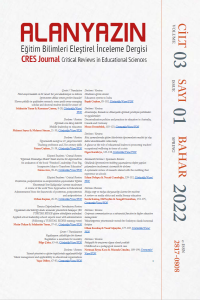Bir Kitle “İhya” Aracı Olarak Okul
Okul, yapısı itibariyle işlev ve pratiklere indirgenemeyecek kadar karmaşık bir sistemi tanımlar. İnsanlık, kendi gelişim macerası içinde okulu “çok boyutlu bir yapı” olarak görmüş; gerekliliğini genellikle “hayati” olarak değerlendirmiştir. Son yüzyıla kadar okulun gereksizliğiyle ilgili neredeyse hiçbir ciddi eleştiriye rastlanmaz. Özellikle yeni asrın getirdiği yenilikler, tekçi perspektif, dijital dünya olanakları gibi farklılıklar okulun rolü üzerinde tartışmaların yapılmasına fırsat vermiş ve mevcut rolü sıkça gündem olmuştur. Gatto ve İllich gibi düşünürlerin çalışmalarıyla okul üzerinden yapılan değerlendirmelerin haklılık payı söz konusu olsa da dikkatle
bakıldığında bunların “olumsuz örnekler” üzerinden geliştirilen eleştiriler olduğu görülecektir. Aracın zengin, amacın fakirleştiği dijital çağda okulun meydan okuyucu bir metafor olarak yeniden kurgulanması gerekir. Makinayı kutsamadan insani olanı hikmetle önceleyen bir okul tasavvuruna ihtiyaç vardır. Bu bağlamda çalışmamız, geleceğin okulunu “her şeye rağmen” insanın yeniden ihyası için en kritik kurumsal olgu olarak kabul etmektedir. Doğal bir sistem olarak okul, aktüel ve popüler “olumsuzlamalara” karşı, geleceği yeniden inşa edecek en güçlü yapı olarak değerlendirilmektedir.
School as a Mass Revival Tool
The school defines a system that is too complex to be reduced to functions and practices. Humanity saw the school as a "multi-dimensional structure" in its development adventure; ıts necessity was generally considered to be "vital". Until the last century, there was hardly any serious criticism that the school was unnecessary. Especially the differences such as the innovations of the new century, the monist perspective, the possibilities of the digital
world gave the opportunity to discuss the role of the school and its current role was frequently brought up. Even though the evaluations made over the school with the works of thinkers such as Gatto and Illich have a fair share, it will be seen that these are criticisms developed on the basis of "negative examples". In the digital age where the vehicle is rich and purpose is impoverished, the school must be reconstructed as a challenging metaphor. There is a need for a vision of a school that prioritizes the human with wisdom without blessing the machine. In
this context, our study regards the school of the future as the most critical institutional phenomenon for human rejuvenation "despite all". School as a natural system is considered to be the strongest structure to rebuild the future against actual and popular "negativities".
___
- Erkilet, A. (2005). Büyük Doğu nereden doğar. Hece (97).
- Ersoy, M. A. (2007). Safahat. İstanbul: Beyan.
- Gatto, J. T. (2019). Eğitim bir kitle imha silahı. İstanbul: Edam.
- İllich, İ. D. (2013). Okulsuz toplum. (M. Özay, Çev.) İstanbul: Şule.
- Karakoç, S. (1995). Diriliş neslinin amentüsü. İstanbul: Diriliş.
- MEB. (2018). MEB, 2023 Vizyon Belgesi. Ankara: MEB.
- Topçu, N. (2016). Türkiye’nin maarif davası. İstanbul: Dergah.
